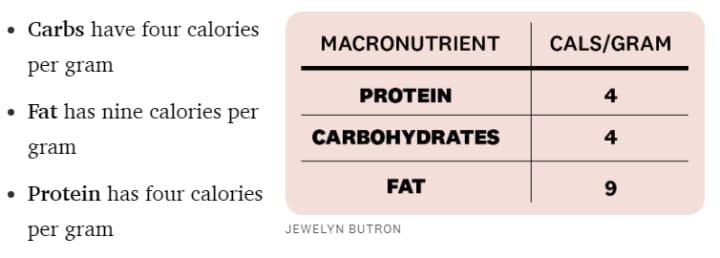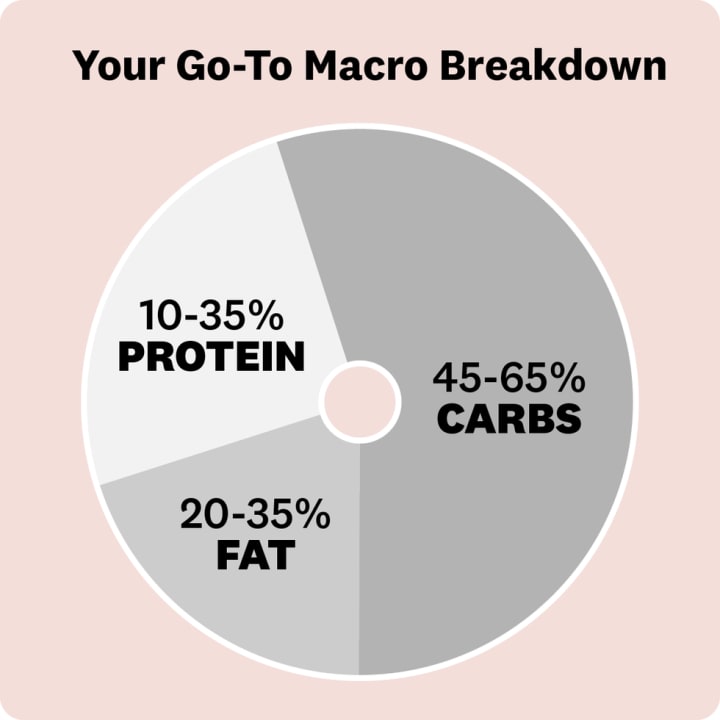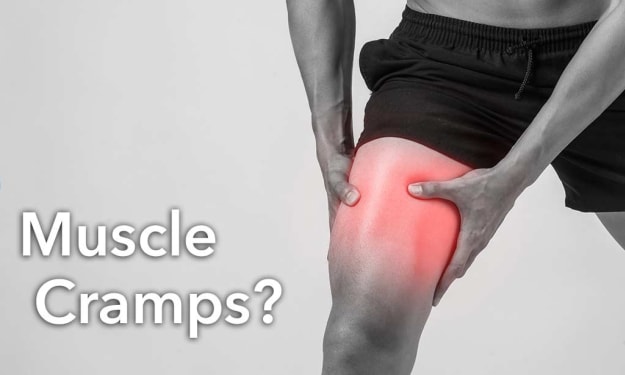What are macros, anyway?
This Is Exactly How To Count Macros To Lose Weight, According To RDs

If you're trying to lose weight, there are so many diets and methods you can choose from, like the keto diet, intermittent fasting, and the Mediterranean diet. But one that has become really popular is counting macros. It revolves around keeping tabs on macronutrients (a.k.a. macros): protein, carbohydrates, and fat. And best of all, no foods are off-limits. It encourages you to track your nutrients and make smart food choices. Of course, how to count macros is little more complicated than just writing everything down in a food journal.
Consult a meal with an expert for a lifetime of good health
A huge plus is that iConsult a meal with an expert for a lifetime of good healtht's more flexible, says Jessica Crandall Snyder, RDN, a certified diabetes educator and the founder and owner of Vital RD. Popular diets like keto and intermittent fasting are restrictive. "They’re not sustainable long-term, they don’t teach good eating patterns and they could set you up for long-term risk for deficiencies," she says.
When you count macros, on the other hand, you focus on the makeup of the food you’re eating. "Other things should be considered along with macro counting, such as what type of foods you are eating, balance, stress management, adequate sleep, adequate fluid intake, genetics, exercise, age, medication conditions, and sex," notes Jonathan Valdez, RDN, the owner of Genki Nutrition and a spokesperson for the New York State Academy of Nutrition and Dietetics.
As amazing as this all sounds, counting macros may not be the best fit for everyone. "Macro counting can be time-consuming, stressful, and can lead to disordered eating, which ultimately defeats the purpose of a healthier lifestyle,” says Valdez.
Here's everything you need to know about macros.
Macros are the nutrients your body can't live without: carbohydrates, protein, and fat. Each macro plays its own role—and each has its own weight-loss superpowers.
You'll want to look at the individual number of carbohydrates, fats, and proteins you're taking in and modify that based on your goals for weight loss or performance, according to Snyder. "Instead of tracking calories, you’re tracking the components of calories that fuel your body," she explains.
Here's a breakdown of each macronutrient.
Macro #1: Carbs
Repeat after me: Carbs are not the enemy—even if you're trying to lose weight. “Carbohydrates are the most important energy source for almost all human cells,” explains Mascha Davis, RDN, a spokesperson for the Academy of Nutrition and Dietetics.
Your body digests them quickly and turns them into sugar, or blood glucose, which you then store in your liver and muscles as glycogen. Together, blood glucose and glycogen fuel high-intensity exercise—the kind you need to burn fat and build metabolism-boosting muscle.
Carbs are also tied to your levels of the happy-maker neurotransmitter called serotonin (so carbs may impact your mood).
Macro #2: Protein
You know that protein intake is used to build and maintain your body’s lean muscle, but it does a whole lot more than that. “Protein makes up the enzymes that power chemical reactions in the body,” Davis explains. “It also makes the hemoglobin that transports oxygen through the body.” And if oxygen doesn’t get where it needs to go, you can forget about having the energy to take the stairs, let alone power through an hour-long run.
Plus, when it comes to boosting your satiety levels so that you can feel full on fewer calories, protein kills. (When you eat protein, your gut makes hormones that slow down the movement of food through your GI tract, meaning you stay fuller for longer.)
By slowing digestion, protein also slows the release of glucose into your blood stream to prevent the blood sugar and insulin spikes that can create health issues, explains Alexandra Sowa, MD, a New York City-based internal medicine physician and diplomate of the American Board of Obesity Medicine.
Macro #3: Fat
If the keto diet has taught us anything, it’s that consuming fat does not automatically lead to weight gain—even if fat does contain more calories, ounce per ounce, than the other macros.
Here's the thing: Fat makes up cell membranes, promotes nerve and brain health, and increases the absorption of the fat-soluble vitamins A, D, E, and K, all of which are crucial to healthy weight-loss efforts. And while fat doesn’t trigger the exact same satiety-boosting hormones that protein does, it is relatively slow to digest, further stabilizing blood sugar levels and keeping cravings away.
But Snyder doesn't recommend this diet as something you should do on your own, with zero guidance. "I strongly recommend working with a registered dietitian because you’ll get great nutrition information, plus you'll be able to fill in nutrient gaps and find food that you can enjoy that fit the goal for fueling your body appropriately," she says.
Counting macros comes with major health benefits.
Counting macros can have several health benefits. Here's what you can expect if you try it.
You may lose weight. By tracking your macros and sticking to a certain amount, you may eliminate excess calories from your diet and lose weight.
You'll be able to gain muscle more easily. Many people struggle to eat the amount of protein they need to build and repair muscle mass after workouts. Counting macros can help ensure you're getting enough protein to see results from your strength training.
You'll have a clear roadmap to solid nutrition. “Most people need structure to guide their eating habits,” says Sonya Angelone, RD, a spokeswoman for the Academy of Nutrition and Dietetics. “Otherwise people tend to eat what they want, when they want it.” If you have trouble listening to internal cues, like when you feel full, this can be helpful, she says.
You'll pay more attention to what you're eating. “Just paying more attention to what you eat will have an impact on food intake and will usually result in better choices and fewer calories,” Angelone says.
By getting the ideal combination of carbs, protein, and fats, your body will function optimally. Carbs fuel your energy production, proteins build up your immune system, muscle mass, and metabolism, and fats help absorb essential nutrients, according to Snyder.
This is exactly how to count your macros.
First, this is how many calories are in each gram of the three primary macronutrients (you'll need this information later on):

Everyone’s macro goals can vary slightly, but the National Academies of Sciences, Engineering, and Medicine recommends adults to get 45 to 65 percent of their calories from carbs, 10 to 35 percent from protein, and 20 to 35 percent from fat.

Consult a meal with an expert for a lifetime of good health
Because percentages are complicated, there's a specific formula you can follow to determine how many grams of carbs, fat, and protein you should get on a diet, according to how many calories you're taking in. (FYI: A 1,600-calorie diet is a reasonable ballpark for active women trying to lose weight, says Angelone, though those calorie goals may not be accurate for everyone.)
Carbs: Calories per day (1,600) x percentage of calories from carbs (.50) / Number of calories per gram in carbohydrates (4) = 200 grams of carbs per day
Protein: Calories per day (1,600) x percentage of calories from protein (.20) / Number of calories per gram in protein (4) = 80 grams of protein per day
Fat: Calories per day (1,600) x percentage of calories from fat (.30) / Number of calories per gram in fat (9) = 53 grams of fat per day
Counting macros to lose weight comes with some downsides.
As you’ve probably already guessed, counting macros involves a good amount of planning and math. “It’s a bit cumbersome to count macros unless you eat the same thing every day,” Angelone says. “But then your diet becomes monotonous and probably not nutritionally adequate.” Still, she says, it gets easier once you get the hang of it.
But there are a few side effects you should be aware of, especially if you're planning on counting macros without the help of an RD. Setting macro goals too low, for example, might cause energy fatigue, brain fog, and nutrient deficiency, while setting them too high might not give you the health benefits you’re looking for (weight loss, improved performance, etc.).
And when it comes to these numbers, some people may find themselves getting a little too focused on their daily macro counts—which could possibly lead to disordered eating. Remember: Your macro goals should act as guidelines, but you shouldn't feel obligated to hit them every. Single. Day.
For people who feel overwhelmed by counting macros, Snyder recommends incorporating counting in spurts. "Try and track for a week and then you have a really good idea of the kind of foods you’re typically eating and where you need to adjust, and that may give you some really good insights," Snyder says. "I don’t encourage tracking forever, but I do think checking in with yourself every once in a while and seeing if you’re on track can be helpful for some clients."
Interested? It's super easy to get started.
Counting macros can seem a little overwhelming, but you can start pretty simply. If you want to test it out first before upending your current diet, Angelone recommends kicking things off by keeping a food diary to get an idea of what you eat on a regular basis. Track and calculate your macros (per the instructions above) and look at your food choices to see what changes you need to make based on those numbers.
About the Creator
Joncaster
PLEASE SHARE GOOD THINGS AND LEARN
TO EACH DAY YOU ARE 1% BETTER EVERY DAY
Follow me to learn and share
Enjoyed the story? Support the Creator.
Subscribe for free to receive all their stories in your feed. You could also pledge your support or give them a one-off tip, letting them know you appreciate their work.






Comments
There are no comments for this story
Be the first to respond and start the conversation.